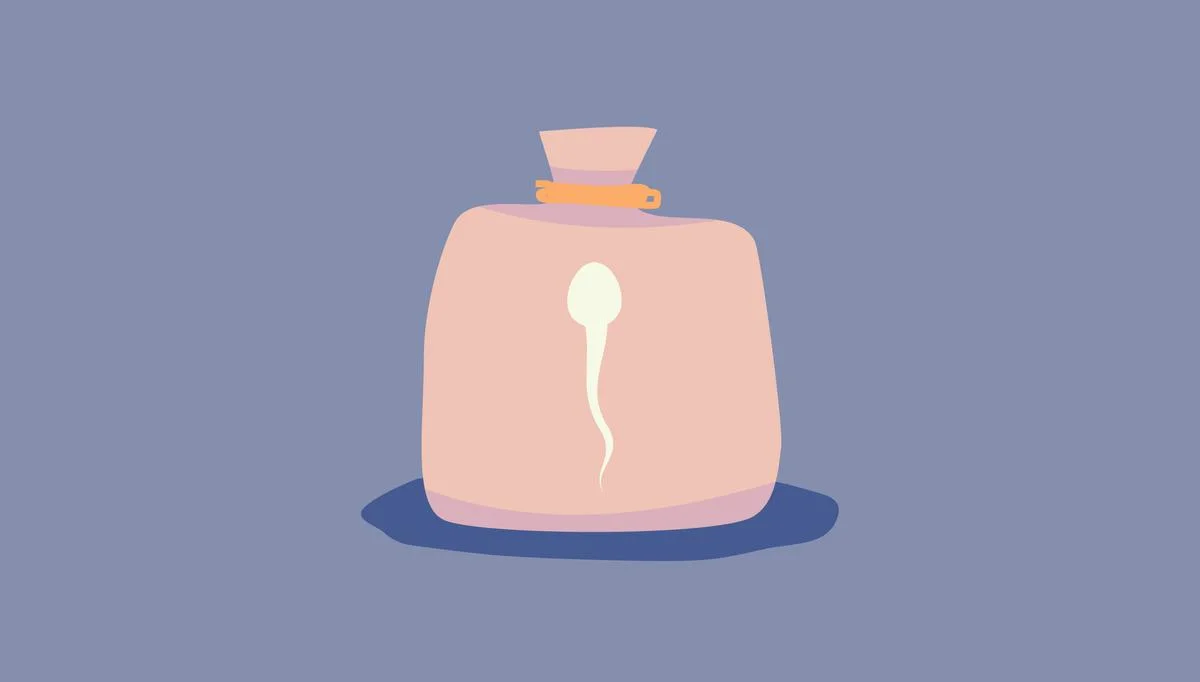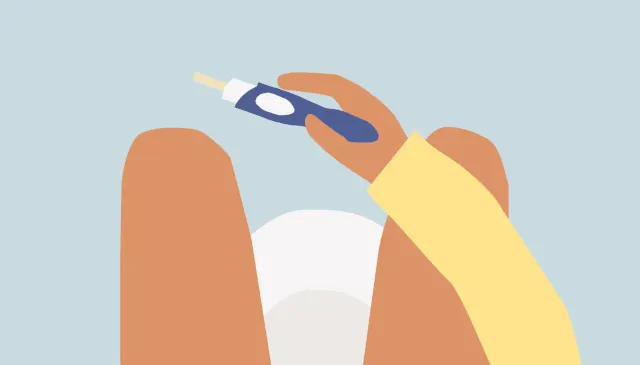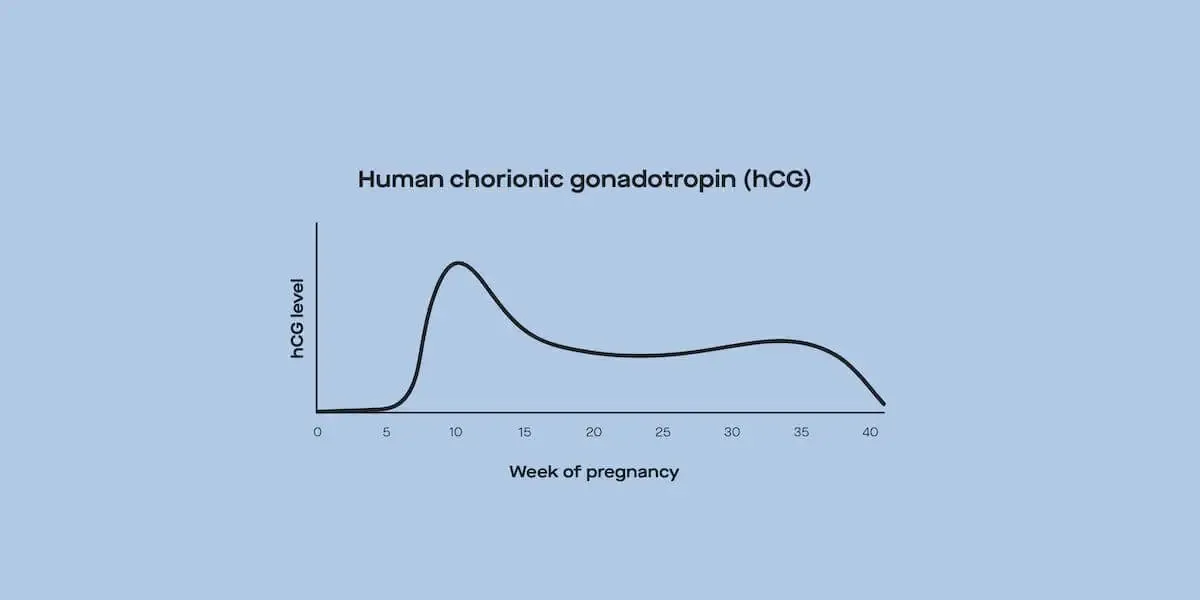Here's what we'll cover
Here's what we'll cover
In the past, people given a polycystic ovarian syndrome (PCOS) diagnosis were told getting pregnant with PCOS would be difficult, if not impossible. While there are some truths to this—PCOS is one of the most common causes of infertility—having a PCOS diagnosis doesn’t mean you can’t get pregnant (Holesh, 2017).
Today, several options are available to help people with PCOS get pregnant naturally or through assisted reproductive technologies.
What is PCOS?
Polycystic ovarian syndrome or PCOS is relatively common: 5–20% of people assigned female at birth have the condition. PCOS affects the endocrine system, the network responsible for producing and regulating your hormones (Azziz, 2016).
It occurs when the ovaries produce more androgens, the hormones responsible for developing male sex characteristics, than necessary. This hormonal imbalance can cause symptoms such as increased body hair growth, acne, and hair loss along your scalp. While it’s not clear what causes PCOS, there seems to be a genetic component. You are 30-50% more likely to develop the condition if your mother or sister has it (Azziz, 2016).
PCOS can also increase your likelihood of developing obesity, type 2 diabetes, insulin resistance, metabolic syndrome, endometrial cancer, and cardiovascular disease (Teede, 2018).
Though the name polycystic ovarian syndrome references cysts, some experts say that that’s confusing because the cysts in PCOS aren’t technically cysts. Cysts are typically fluid-filled sacs greater than 2 cm lined with epithelial cells. The “cysts” in PCOS are an excess of small, less than 8 mm, immature follicles. Follicles house egg cells and are a normal part of the ovary (Teede, 2014).
To get a PCOS diagnosis, you must have at least two of the following characteristics (Leon, 2020):
Physical symptoms of excess androgens or elevated levels of androgens in your blood
Polycystic ovarian morphology: an excessive number of antral follicles—pockets within the ovary that contain one immature egg cell each
Infrequent ovulation leading to irregular periods
Treating PCOS depends on your symptoms. If symptoms do not interfere with your life, you may not require medical treatment (Azziz, 2016).
Because symptoms can vary significantly, some people do not know they have PCOS until they have trouble conceiving. Doctors typically recommend a combination of lifestyle changes, such as regular exercise and maintaining a healthy weight, and medications for balancing hormones and reducing symptoms. The same goes for treating PCOS-related infertility (Azziz, 2016).
How does PCOS impact fertility?
About 40% of people with PCOS experience infertility. It’s important to note that while it can cause fertility problems, many people with PCOS can go on to have biological children either naturally or through medical intervention (Artini, 2018; Teede, 2011).
PCOS impacts fertility by causing irregular ovulation, which makes it hard to time your fertile days. An unfertilized egg only survives 12 to 24 hours post-ovulation, so pregnancy usually won’t happen if fertilization does not occur within this window (Sung, 2021).
This can present a problem because if you don’t know when you ovulate, you may not be able to time intercourse in a way that aligns with your fertile window. Irregular ovulation also leads to longer menstrual cycles, cycles longer than 35 days, which means fewer chances to get pregnant per year (Leon, 2020).
How to get pregnant with PCOS
About 80% of all people trying to conceive will get pregnant within the first six months of trying. The American Society for Reproductive Medicine recommends fertility specialists evaluate their patients for infertility if they have not conceived after one year of trying; and due to age-related declines in fertility, if you are over the age of 35, you can get a fertility evaluation after six months of trying unsuccessfully (Pfeifer, 2017).
Conceiving naturally with family planning methods
Because people with PCOS can conceive naturally, your doctor may recommend trying at home for six months to a year, depending on your age. Research suggests that anyone trying to get pregnant should have unprotected intercourse every one to two days (Pfeifer, 2017).
Many people trying to conceive naturally use family planning methods like ovulation kits and basal body temperature tracking. However, these methods may not be as effective in people with PCOS because they consistently produce higher levels of luteinizing hormone, the hormone that ovulation kits detect (Leon, 2020).
Temperature tracking can also be tricky since PCOS causes a longer than average follicular phase, leading to extended periods of lowered body temperature (Goeckenjan, 2020).
Fertility drugs and in vitro fertilization (IVF)
If you have long menstrual cycles and ovulate irregularly, your doctor can prescribe medication to help you ovulate.
Clomiphene citrate and letrozole are two ovulation induction treatment options.
While using these medications, you'll need to see your doctor for blood tests to confirm ovulation occurred. These blood tests will also help you time when to have intercourse or when to schedule intrauterine insemination (IUI) (Legro, 2014).
Metformin, a drug used to treat insulin resistance in people with PCOS, can also help regulate menstrual cycles. However, used alone, it is less effective than both clomiphene citrate and letrozole (ASRM, 2017).
A study looking at 626 women with PCOS found that clomiphene citrate (Clomid) had an ovulation rate of 49% and a live birth rate of 22.5%, whereas metformin had an ovulation rate of 29% and a birth rate of 7.2%. When used together, the live birth rate was 26.8% (Legro, 2007). Another study comparing clomiphene citrate and letrozole found that clomiphene citrate had a live birth rate of 19.1%, while the birth rate for letrozole was 27.5% (Legro, 2014).
Many people with PCOS do not require assisted reproductive technologies like in vitro fertilization. IVF is typically only necessary if other fertility issues are present (Teede, 2018; Teede, 2011).
PCOS increases the risk of ovarian hyperstimulation syndrome (OHSS), a painful condition caused by an exaggerated response to fertility medications containing follicle-stimulating hormone (FSH). Taking metformin during IVF can reduce that risk (Teede, 2018).
Lifestyle changes
If you are overweight, your healthcare provider may recommend weight loss before proceeding with fertility treatments. People with PCOS are more likely than those without PCOS to be overweight. However, the relationship between weight and PCOS is not well understood (Azziz, 2016).
Being overweight can affect your fertility, making it harder to conceive. It increases the risk of miscarriage and pregnancy complications. A higher body mass index or BMI has also been shown to reduce the effectiveness of fertility medications (Artini, 2018).
Fertility preservation and PCOS
If you are not ready to get pregnant now but think you would like to have children in the future, you can freeze your eggs. People with PCOS tend to have more eggs retrieved than those without it (Vaz, 2016).
However, since egg freezing uses the same fertility drugs as in vitro fertilization, like with IVF treatment, there is a higher risk of developing OHSS. Lowering the dosage of fertility medications can help reduce the risk of over-response (Thakre, 2019).
Whether you just started trying, have been trying for a while, or plan on getting pregnant in the future, know that it’s possible to conceive with PCOS. Ovulating is the key to success when it comes to getting pregnant with PCOS. If you can solve that part of the equation, your odds of conceiving are good. Talk with your healthcare provider about the treatment options available to you based on your fertility needs.
DISCLAIMER
If you have any medical questions or concerns, please talk to your healthcare provider. The articles on Health Guide are underpinned by peer-reviewed research and information drawn from medical societies and governmental agencies. However, they are not a substitute for professional medical advice, diagnosis, or treatment.
Artini, P. G., Obino, M. E. R., Sergiampietri, C., Pinelli, S., Papini, F., Casarosa, E., & Cela, V. (2018). PCOS and pregnancy: a review of available therapies to improve the outcome of pregnancy in women with polycystic ovary syndrome. Expert Review of Endocrinology & Metabolism, 13 (2), 87-98. doi: 10.1080/17446651.2018.1431122 Retrieved from https://pubmed.ncbi.nlm.nih.gov/30058861/
Azziz, R., Carmina, E., Chen, Z., Dunaif, A., Laven, J. S., Legro, R. S., et al. (2016). Polycystic ovary syndrome. Nature Reviews Disease Primers, 2 (1), 1-18. doi: 10.1038/nrdp.2016.57. Retrieved from https://www.nature.com/articles/nrdp201657
Goeckenjan, M., Schiwek, E., & Wimberger, P. (2020). Continuous body temperature monitoring to improve the diagnosis of female infertility. Geburtshilfe und Frauenheilkunde, 80 (07), 702-712. doi: 10.1055/a-1191-7888. Retrieved from https://www.ncbi.nlm.nih.gov/pmc/articles/PMC7360395/
Holesh, J. E., Bass, A. N., & Lord, M. (2017). Physiology, ovulation. [Updated May 9, 2021]. In: StatPearls [Internet]. Retrieved from https://www.ncbi.nlm.nih.gov/books/NBK441996/
Legro, R. S., Barnhart, H. X., Schlaff, W. D., Carr, B. R., Diamond, M. P., Carson, S. A., et al. (2007). Clomiphene, metformin, or both for infertility in the polycystic ovary syndrome. New England Journal of Medicine, 356 (6), 551-566. doi: 10.1056/NEJMoa063971. Retrieved from https://pubmed.ncbi.nlm.nih.gov/17287476/
Legro, R. S., Brzyski, R. G., Diamond, M. P., Coutifaris, C., Schlaff, W. D., Casson, P., & Zhang, H. (2014). Letrozole versus clomiphene for infertility in the polycystic ovary syndrome. New England Journal of Medicine, 371, 119-129. Doi: 10.1056/NEJMoa1313517. Retrieved from https://pubmed.ncbi.nlm.nih.gov/25006718/
Leon, L. I. R., & Mayrin, J. V. (2020). Polycystic Ovarian Disease. [Updated Jul 21, 2021]. In: StatPearls [Internet]. Retrieved from https://www.ncbi.nlm.nih.gov/books/NBK459251/
Padilha, T., & Deretti, E. A. (2021). Billings Ovulation Method: between efficacy and lack of knowledge. Revista Bioética, 29, 208-219. Retrieved from https://www.scielo.br/j/bioet/a/FZpFjYwc8JmfPC9ZgDxLnfv/abstract/?lang=en
Pfeifer, S., Butts, S., Fossum, G., Gracia, C., La Barbera, A., Mersereau, J., & Vernon, M. (2017). Optimizing natural fertility: a committee opinion. Fertility and Sterility, 107 (1), 52-58. doi: 10.1016/j.fertnstert.2016.09.029. Retrieved from https://pubmed.ncbi.nlm.nih.gov/28228319/
Practice Committee of the American Society for Reproductive Medicine. (2017). Role of metformin for ovulation induction in infertile patients with polycystic ovary syndrome (PCOS): a guideline. Fertility and Sterility, 108 (3), 426-441. doi: 10.1016/j.fertnstert.2017.06.026. Retrieved from https://pubmed.ncbi.nlm.nih.gov/28865539/
Sung, S., Abramovitz, A. (2021). Natural Family Planning. [Updated Jul 26, 2021]. In: StatPearls [Internet]. Retrieved from https://www.ncbi.nlm.nih.gov/books/NBK546661/
Teede, H. J., Misso, M. L., Deeks, A. A., Moran, L. J., Stuckey, B. G., Wong, J. L., et al. (2011). Assessment and management of polycystic ovary syndrome: summary of an evidence-based guideline. The Medical Journal of Australia, 195 (6), S65-S112. doi: 10.5694/mja11.10915. Retrieved from https://pubmed.ncbi.nlm.nih.gov/21929505/
Teede, H. J., Gibson-Helm, M., Norman, R. J., & Boyle, J. (2014). Polycystic ovary syndrome: perceptions and attitudes of women and primary health care physicians on features of PCOS and renaming the syndrome. The Journal of Clinical Endocrinology & Metabolism, 99 (1), E107-E111. doi: 10.1210/jc.2013-2978. Retrieved from https://pubmed.ncbi.nlm.nih.gov/24178791/
Teede, H. J., Misso, M. L., Costello, M. F., Dokras, A., Laven, J., Moran, L., et al (2018). Recommendations from the international evidence-based guideline for the assessment and management of polycystic ovary syndrome. Human Reproduction, 33 (9), 1602-1618. doi: 10.1093/humrep/dey256. Retrieved from https://pubmed.ncbi.nlm.nih.gov/30052961/
Thakre, N., & Homburg, R. (2019). A review of IVF in PCOS patients at risk of ovarian hyperstimulation syndrome. Expert Review of Endocrinology & Metabolism, 14 (5), 315-319. doi: 10.1080/17446651.2019.1631797. Retrieved from https://pubmed.ncbi.nlm.nih.gov/31242780/
Vaz, G., Evangelista, A., Tupinambá, B., Sartorio, C. A. P., Cardoso, M. C. A., Erthal, M., et al. (2016). Are patients with polycystic ovarian syndrome ideal candidates for oocyte donation?. BioMed Research International. doi: 10.1155/2016/5701609. Retrieved from https://www.ncbi.nlm.nih.gov/pmc/articles/PMC4844867/










